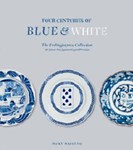The latest claims by the Manhattan District Attorney’s office yet again raise the question as to who is making what appear to be wildly exaggerated valuations for items returned to source countries. We also need to ask exactly what evidence exists to prove that they were looted.
Looking at the items listed on this occasion it is impossible to see how the DA’s office arrived at the figure of $19m. According to expert valuers from the Antiquities Dealers’ Association, the south Italian plate shown is worth up to about $7000 at auction and only if it were to have a good provenance. Even if you include the price achieved for the ‘best’ Corinthian helmet at auction, quoting a valuation figure of nearly $19m for 19 objects does not add up and is completely irresponsible.
We have also just written to the DA’s office about the manner in which their media release was presented. Having unequivocally labelled a number of named individuals as “major antiquities traffickers” in the opening paragraph, an unheralded footnote states: “The charges referenced within are merely allegations, and the individuals are presumed innocent unless and until proven guilty.”
Needless to say, any journalist failing to scroll down to the bottom of the release will not see this caveat, with the result that published reports risk repeating the statement (which the release’s footnote admits is unsubstantiated) at the top. We have found at least two examples of this happening in this case.
ATG readers should be aware that while criminals do exist in the market and should not be tolerated, a vast amount of disinformation and misinformation clouds the true picture. Part of the problem is that much of this fake news comes from authorities and institutions on whom the public should be able to rely. Unfortunately, taking what they say at face value simply adds to the problem.
In November 2020, the trade exposed UNESCO’s advertising campaign against the art market, The Real Price of Art, as extensively fraudulent. While UNESCO apologised and reset the campaign, in doing so it exchanged one set of bogus information for another, which the trade also exposed.
At the same time UNESCO claimed that the annual value of trafficked antiquities was $10bn. We were able to demonstrate to them immediately that this was wrong, based on their own source, yet despite continuing to press them on this, it took them 18 months to admit it was wrong and remove the figure from their website.
As their assistant director-general of culture acknowledged then, no one has any real idea of what the figure is. The independent 2020 RAND Corporation report noted: “Simply put, while we cannot claim to measure the size of the illicit market, we can show that observable market channels are too small to act as conduits for a billion-dollar-a-year illicit trade.”
We have investigated many claims, including those from law enforcement agencies, and found a staggering amount of false data used to reinforce anti-market propaganda, which in turn is used to introduce unjustified and damaging new legislation.
We have the evidence to show this and are happy to share it - indeed we have already sent it out to dozens of media contacts and published it on the ADA and IADAA websites where it can be easily checked using the sources and links provided, so no one has to take our word for what we say.
Check the ‘facts’
It’s time that the media challenged official bodies, from the Manhattan DA’s office to UNESCO, the European Commission, Europol and others, and subject them to the same level of scrutiny that they apply to the market rather than just accepting what they put out in statements.
Let’s have the same transparency and due diligence when it comes to ‘facts’ that these bodies so readily demand of dealers and auction houses in relation to objects. Questions certainly need to be asked about who provides valuations for antiquities to the authorities.
Joanna van der Lande
Chairman, Antiquities Dealers’ Association













